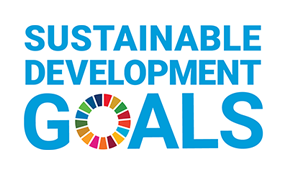At a GlanceReport 4—Emissions Reduction Fund—Natural Resources Canada
Why we did this audit
- Canada and all other countries need to significantly reduce their greenhouse gas emissions to stabilize concentrations of these gases in the atmosphere and mitigate catastrophic climate change. The Government of Canada continues to spend considerable money to reduce the country’s total emissions. The mitigation programs it designs need to deliver real emission reductions below the levels recorded for previous years to achieve Canada’s targeted emissions levels in 2030 and 2050.
- If programs funding reductions in greenhouse gas emissions overestimate expected results, the funding provided could lead to a smaller amount of reductions than expected or even to an increase in emissions. This could be an inefficient use of taxpayers’ money and could lessen Canada’s chances of meeting its climate change commitments.
Our findings
- Natural Resources Canada did not design the Onshore Program of the Emissions Reduction Fund to ensure credible and sustainable reductions of greenhouse gas emissions in the oil and gas sector or value for the money spent.
- We found that Natural Resources Canada did not follow key greenhouse gas accounting principles or a standard when preparing its estimates of expected reductions in emissions. As a result, the department’s expectation that the Onshore Program could achieve 3.7 megatonnes of carbon dioxide equivalentMt CO2 eq of emission reductions per year as of 2023 was an overestimate and was not reliable.
Key facts and figures
- In November 2020, the government launched the Onshore Program of the Emissions Reduction Fund, which was part of Canada’s COVID‑19 Economic Response Plan. The government saw the Onshore Program as a way to help the energy sector deal with lower oil prices during the pandemic.
- In April 2021, Natural Resources Canada announced that it had funded 40 projects from 15 companies, with a total value of $71.5 million, and that these projects were expected to reduce emissions of greenhouse gases by 3.1 Mt CO2 eq in the first year following their implementation.
Our recommendations
- To help Canada achieve its national targets for the reduction of greenhouse gas emissions, when funding projects intended to reduce greenhouse gas emissions, Natural Resources Canada should ensure that applicants have submitted reliable estimates of expected emission reductions.
- In determining the funding level of applications for projects that aim to reduce greenhouse gas emissions, Natural Resources Canada should assess the minimum funding required for each project to achieve the expected reductions in emissions, rather than providing maximum funding to every eligible project.



The matters examined in this audit relate to Goal 13: “Take urgent action to combat climate change and its impacts.” This goal has the associated target 13.2: “Integrate climate change measures into national policies, strategies and planning.”
Our examination also relates to Goal 9: “Build resilient infrastructure, promote inclusive and sustainable industrialization and foster innovation.”
Visit our Sustainable Development page to learn more about sustainable development and the Office of the Auditor General of CanadaOAG.
Related information
| Entities | |
|---|---|
| Completion date | 20 August 2021 |
| Tabling date | 25 November 2021 |
| Related audits |
|